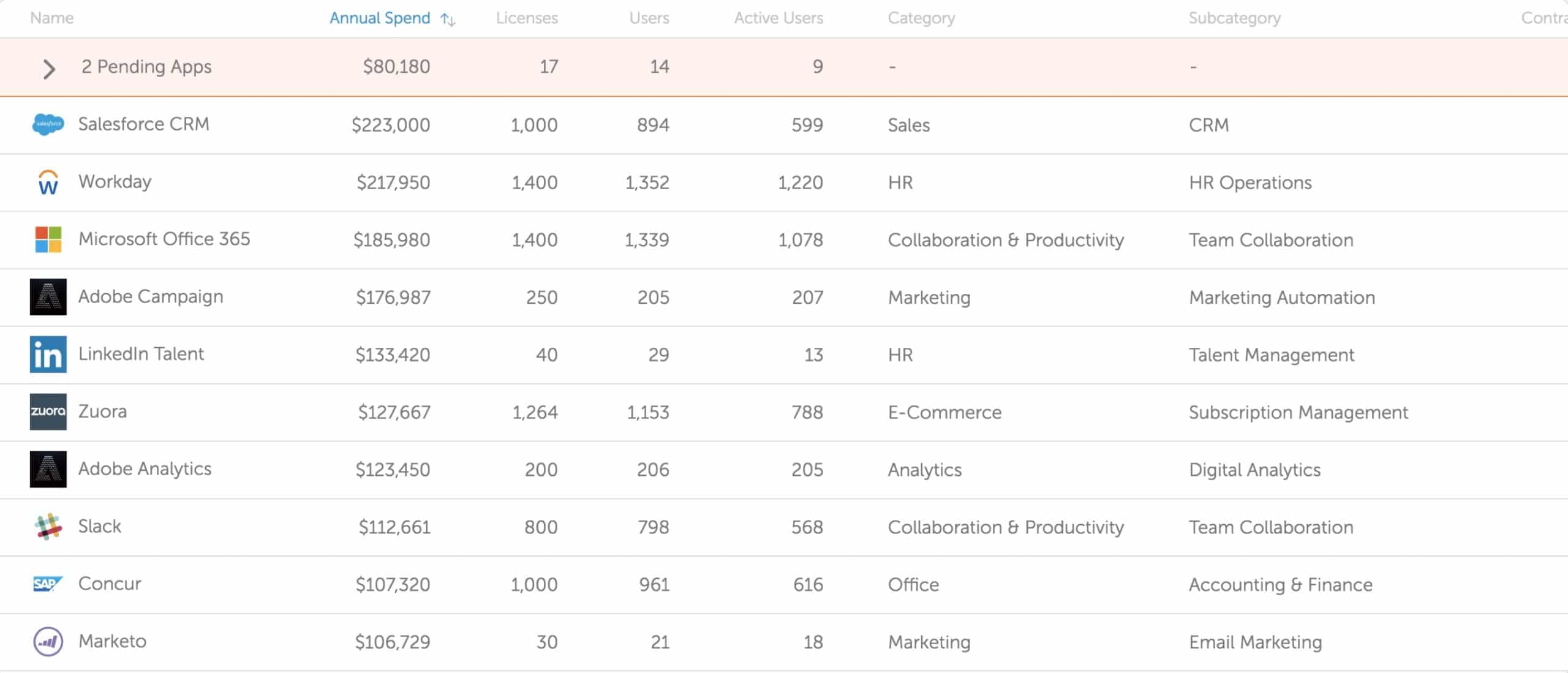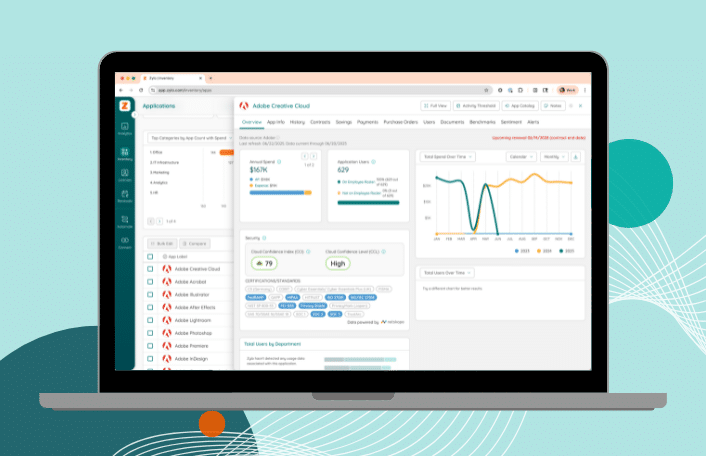
From Chaos to Control: Applying FinOps Thinking to SaaS
Table of Contents ToggleFrom a SaaS Discovery Tool to a SaaS...
Back
Back
Search for Keywords...
Blog

11/08/2017
Table of Contents
When we created Zylo, we did so with the intent of providing a solution for enterprise CIOs, CFO,s and Procurement leaders to discover all cloud-based subscription software and eliminate shadow IT.
In doing so, they’d have a way to understand and track the value of the subscription software being used internally and the financial impact of subscription software on their organization.
The early thesis of Zylo revolved around creating a “discovery tool” to accomplish these tasks. Now, Zylo does exactly that and much more. In fact, our enterprise customers now refer to Zylo as a “platform” rather than a single tool because it functions as a central SaaS system of record, providing more value as a system than a single tool with limited functionality.
Shadow IT — IT systems bought or built within an organization without organizational approval. In the world of SaaS, shadow IT is bought by the business units to immediately solve efficiency issues, increase productivity, provide education, and drive value within the department.
Believe it or not, some say that shadow IT–in moderation–is good for business. When business units are independently purchasing solutions (often best-in-class, one-off solutions), the organization as a whole innovates at a faster rate than if all purchases were handled by Sourcing, Procurement, or IT teams.
Five years ago, I might have been inclined to agree. During my time in enterprise Procurement, shadow IT was an inescapable reality that included risks and sunk costs. However, IT and Procurement would greatly hamper innovation if we were to halt disparate solution adoption in order to regain control.
Today, the Zylo Discovery Engine effectively eliminates all shadow IT. The visibility Zylo provides IT leaders facilitates the empowerment of their business units to continue researching and seeking solutions, safely. With Zylo, IT leaders can measure value, determine thresholds for centralized governance, and benchmark costs.
More often than not, our customers report that the organization blames Procurement and IT for the proliferation of Shadow IT.
As organizational software management decision-makers, IT is first blamed for hindering the adoption of effective solutions while enforcing the implementation of ineffective solutions.
Consequently, seen as blind to the needs of individual departments, IT managers lose control of Shadow IT when business units begin the covert purchasing of SaaS applications. The application spend is misplaced in expense reports: Shadow IT prevails.
When these purchased solutions are poorly implemented, business units rely on IT to troubleshoot on-demand. Without previous knowledge of the application, IT managers cannot forecast support and therefore fall short of resources. Once again, business units deem IT ineffective and continue operating under the radar.
Finally, when addressed in terms of security and ROI, IT leaders are blamed again for their inability to wrangle, manage, measure, and secure on all software solutions across the organization. It seems that no matter who purchases the software within the organization, at the end of the day, the blame always ladders up to IT and procurement.
In addition, an interesting shift has started to happen organically within our customer base immediately after gaining early visibility into their complete SaaS stack. Organizations are building internal processes, procedures, and governance off of Zylo now that they confidently understand all of the activity across the organization.
The IT and Finance users are also expanding the adoption of Zylo across a diverse set of users in the business. Let’s look at what other business areas Zylo’s customers are extending the reach (and initial thesis!) of Zylo’s SaaS management platform:
It is clear among Zylo customers that gaining real-time visibility into all software in use across the organization is just the beginning. Zylo brings subscription software out of the “shadows” and enables it to flow into existing processes and governance structures built for traditional on-prem software.
Now IT can work collaboratively with the business on driving value from all software in use across the organization while using existing governance structures.

Table of Contents ToggleFrom a SaaS Discovery Tool to a SaaS...

Table of Contents ToggleWhy Data Integrity Breaks DownWhat Does Data Integrity...

Table of Contents ToggleFrom a SaaS Discovery Tool to a SaaS...

Table of Contents ToggleShelfware DefinedWhy Shelfware HappensPoor Organizational OversightShadow IT and...
| Cookie | Duration | Description |
|---|---|---|
| cookielawinfo-checkbox-analytics | 11 months | This cookie is set by GDPR Cookie Consent plugin. The cookie is used to store the user consent for the cookies in the category "Analytics". |
| cookielawinfo-checkbox-functional | 11 months | The cookie is set by GDPR cookie consent to record the user consent for the cookies in the category "Functional". |
| cookielawinfo-checkbox-necessary | 11 months | This cookie is set by GDPR Cookie Consent plugin. The cookies is used to store the user consent for the cookies in the category "Necessary". |
| cookielawinfo-checkbox-others | 11 months | This cookie is set by GDPR Cookie Consent plugin. The cookie is used to store the user consent for the cookies in the category "Other. |
| cookielawinfo-checkbox-performance | 11 months | This cookie is set by GDPR Cookie Consent plugin. The cookie is used to store the user consent for the cookies in the category "Performance". |
| viewed_cookie_policy | 11 months | The cookie is set by the GDPR Cookie Consent plugin and is used to store whether or not user has consented to the use of cookies. It does not store any personal data. |
